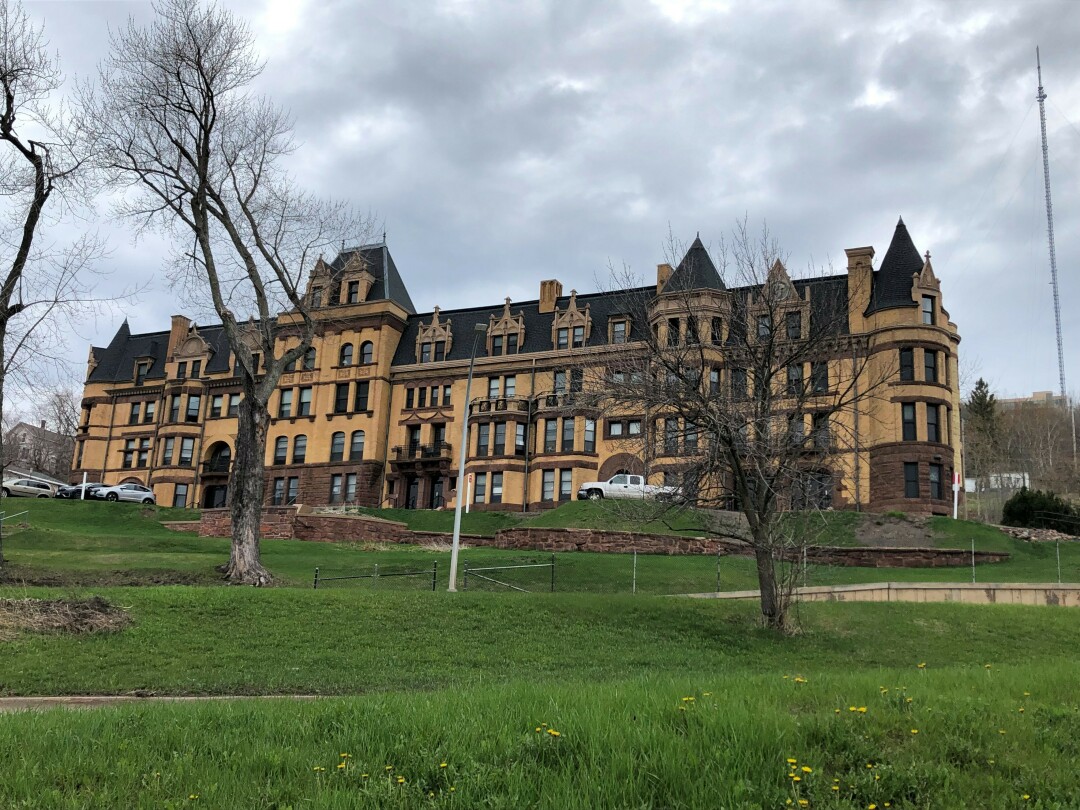News & Articles
Browse all content by date.
 The brick and brownstone trim Munger Terrace. Photo by Jill Fisher.
The brick and brownstone trim Munger Terrace. Photo by Jill Fisher.
May is National Historic Preservation Month in the United States. Back in 1973 National Historic Preservation Week was established by the National Trust for Historic Preservation and by 2005 the designation was extended to the entire month of May.
Every year since local preservation groups, state historical societies and business and civic organizations across the country celebrate Preservation Month through events that promote historic places, heritage tourism and that demonstrate the social and economic benefits of historic preservation.
Preserving historic buildings has proven to be an effective tool in revitalizing neighborhoods and downtowns. It has also shown itself to be a magnet for attracting people to move to places like Duluth.
Blake Romenesko, president of the Duluth Preservation Alliance (DPA), recalled his first impression of Duluth as he was driving along I-35 on his way up the North Shore: “I was taken with the beautiful buildings in downtown, like the Depot and Allworth Building, and realized what a unique place this is. Since I grew up in a suburban community, in a house only 10 years older than me, I have a deep appreciation for the architectural character of this city. I now own a house built in 1892, which is 100 years older than me! I wanted to buy a place that was a part of Duluth’s history, one that I could protect and preserve.”
Older buildings are resources that need not be squandered by automatically razing them and building anew. Restoring them and adapting them to new uses so that they continue to grace our community is paramount to creating an attractive, livable community. Most people agree that community landmarks, such as the former Central High School Building and the former Sacred Heart Cathedral in Duluth’s central hillside are worthy of preservation for future generations.
The City of Duluth has a Heritage Preservation Commission (HPC) which is charged with recommending designation of historic preservation buildings and districts to the city council. It has the responsibility to approve or denies applications for historic construction and demolition permits.
Unfortunately, the HPC has not had the power to stop demolition of historic buildings, even those that have received official historic designations, such as the former Hotel Astoria on East Superior street downtown. That area was the focus of a 1995 plan for “Old Downtown” which was never implemented. New buildings now dominate the are now called the Historic Arts District.
With the powers of the HPC having been gutted and its recommendations routinely ignored, Duluth appears to be in Urban Renewal 2.0 mode.
Mike Poupore, a former member of the Duluth HPC and former president of the DPA commented, “The historic fabric of our city is being completely and systematically decimated. It seems like more historic buildings have been demolished these past few years than in the previous 40.”
He went on to say that there is nothing in our city codes to curtail the destruction of Duluth’s irreplaceable historic buildings. “Duluth could take a lesson from a city like Excelsior, Minnesota, and many others, where value is placed on historic buildings and they are strongly protected by building and development codes.”
The three “Rs” of preservation are Restore, Reuse and Rehabilitate, to which it could be added Respect. There are many resources available for people to become knowledgeable about preservation. The National Park Service/Secretary of Interior has a website filled with detailed information to guide preservation efforts. Main Street programs have been successfully used by communities to save threatened commercial districts where conscientiously implemented. (The jury is out on how well or badly Duluth has done with this program.)
At the federal level, an income tax credit program has provided an important incentive for saving and restoring historic properties and some states have enacted such tax credit programs as well. Minnesota let its tax credit program for historic properties lapse last year but hopefully it will be restored so that adaptive reuse projects like the Armory Arts and Music Center in the former Duluth Armory on London Road can be completed.
Other resources include publications such as the National Trust for Historic Preservation’s Preservation magazine and Old House Journal which showcase examples of restored and refurbished buildings. They can provide inspiration and practical know-how for those interested in undertaking their own preservation projects. It should be recognized that preservation of most of Duluth’s historic buildings has been undertaken primarily by private parties. One example is owner Mike Poupore’s adaptive reuse of the former Hemlock Telephone Exchange building at 1804 East 1st Street.
Many people are aware of The National Register of Historic Places. It is the official list of the nation's historic places worthy of preservation. Authorized by the National Historic Preservation Act of 1966, it falls within the auspices of the National Park Service and is part of a national program to coordinate and support public and private efforts to identify, evaluate, and protect America's historic and archeological resources.
However, many people do not realize that a building listed on the National Register of Historic Places is not protected from being demolished. Only local jurisdictions have the power to do that, if they so choose.
On the last day of May 2023, the Duluth Preservation Alliance will hold its annual Preservation Awards Ceremony at the restored West Theater in West Duluth. That event is free and open to the public. For more information see https://duluthpreservation.org.
| Tweet |

